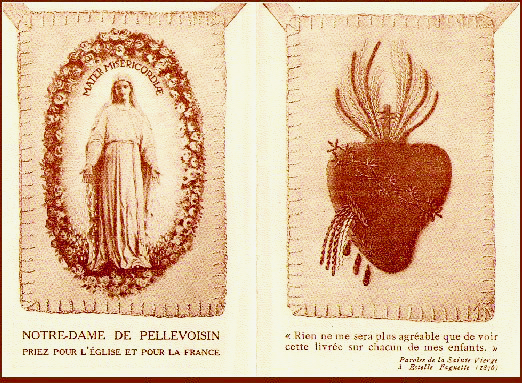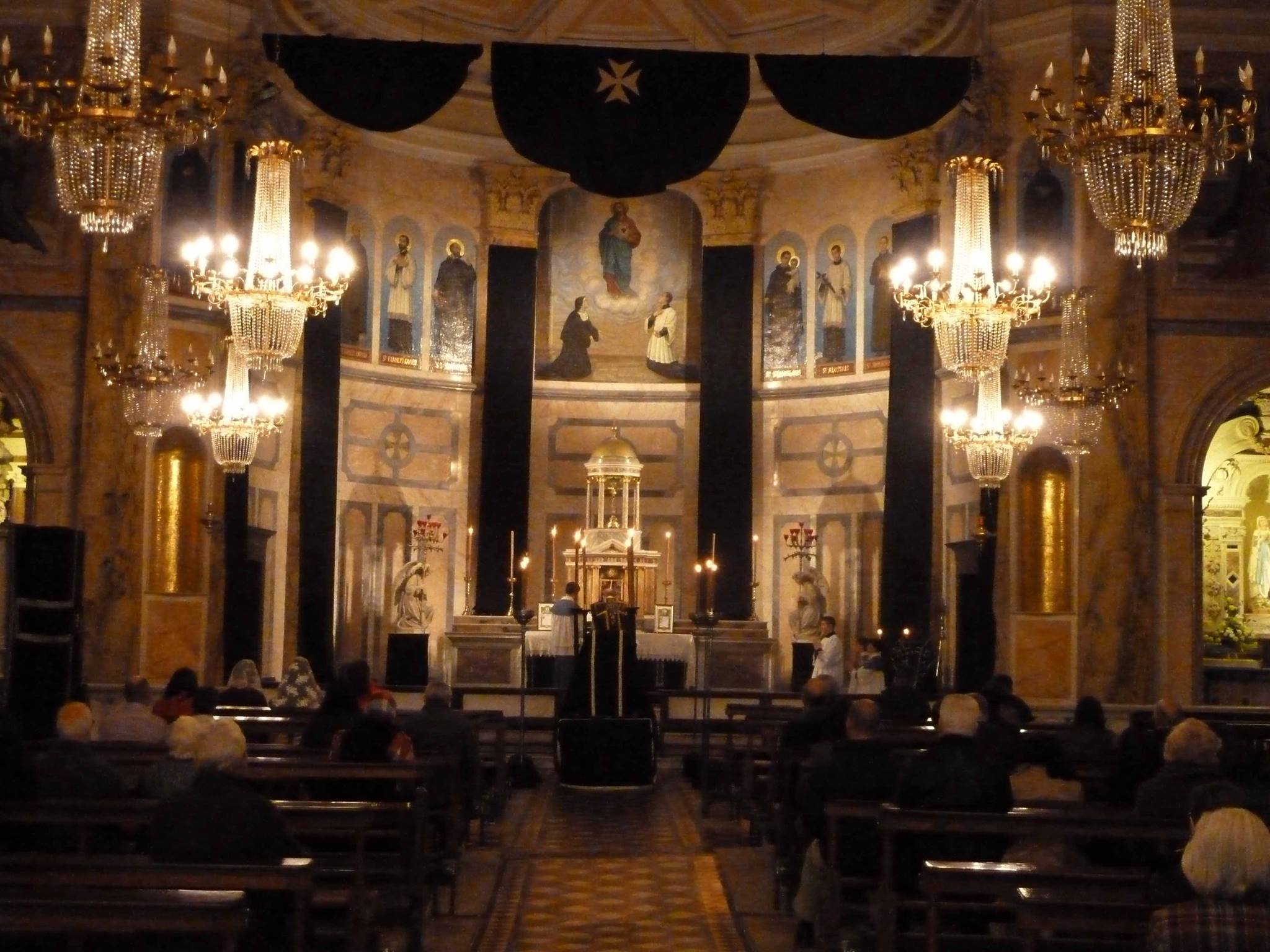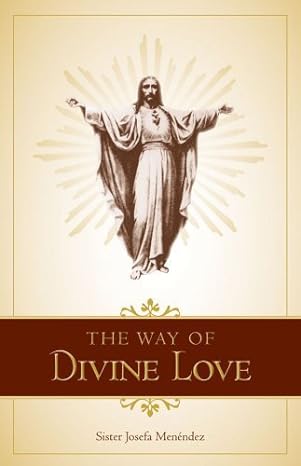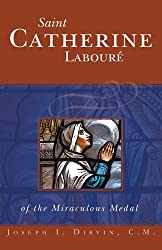
CJS.Org Introductory Remarks:
Here we resume with the fifth part of our series on the reported Marian Apparitions of Our Lady of the Sacred Heart.
These are taken from a 1904 book by Bernard St John – who, in fact, personally knew Estelle Faguette, the visionary at Pellevoisin.
This latest extract is valuable, in that it contains a great deal as to the Vatican response to the events at Pellevoisin.
Thus we see clearly how both the Pope Bl. Pius IX and especially Pope Leo XIII did much, very much, to honour what Estelle Faguette reported.
Or as Bernard St John says (and amply illustrates) below:
‘Leo XIII, following in the footsteps of his predecessor, has given repeated proofs of his approval of the devotion inaugurated at Pellevoisin in 1877.’
As we said in our introduction to this series, the reported Apparitions of Pellevoisin have not – as yet – received full approval.
Still a study of what follows, particularly regarding the actions of Leo XIII, may bring hope that this will someday be the case.
Now, we feel fortunate to be able to re-present this serialised account of the reported Apparitions of Our Lady of Pellevoisin by Bernard St John.
Five parts of this serial have so far appeared, covering the most important events. You can easily navigate through these by clicking on this table of contents:
- Pellevoisin and Our Lady of the Sacred Heart—Pt. I: The First Apparitions
- Pellevoisin and Our Lady of the Sacred Heart—Pt. 2: “I am All Merciful”
- Pellevoisin and Our Lady of the Sacred Heart—Pt. 3: The Scapular of the Heart of Jesus
- Pellevoisin and Our Lady of the Sacred Heart—Pt. 4: The Final Apparitions
- Pellevoisin and Our Lady of the Sacred Heart—Pt. 5: After the Apparitions …
We also refer the interested reader to further series at this site regarding Marian Apparitions in France, also taken from Bernard St John.
For example, the Apparitions of Our Lady of La Salette can be found here, as well as Our Lady of Lourdes (here) and Our Lady of Pontmain (here).
For more about the sources of this series here, please see our first part here, which also contains some introductory notes regarding reports of Our Lady of the Sacred Heart, from Pellevoisin – RB.
From Bernard St John:
It was naturally supposed that the prelate alluded to in the last Apparition could be no other than the archbishop of the diocese, Charles-Amable Prince de la Tour d’Auvergne, who then filled the arch- episcopal See of Bourges, and who, because of his piety and enlightenment, had come to be called the “angel of the diocese.”
This prelate had been watching from a distance what had been going on at Pellevoisin, and although he had abstained from actual interference, his attitude had been one of extreme prudence.
He had even written to the Curé of Pellevoisin advising him to be cautious in the matter of the scapulars.
But, when he heard the particulars of the last Apparition, with certain startling details concerning himself, he consented to receive Estelle at once.
In short, he not only received her at his arch-episcopal palace of Bourges, but retained her by him two days examining and cross-examining her.
The result of the examination was such as to induce him to write at once to the Curé of Pellevoisin, not with the object this time of advising the priest to be cautious in the matter of the scapulars, but, on the contrary, to tell him to get as many of these made as possible and in as short a time as possible.
He then appointed an ecclesiastical commission to enquire into the events that had lately taken place at Pellevoisin.
The commission, which was composed of the most prominent ecclesiastics of the diocese, had at its head Abbé Sautereau, first vicar-general of Bourges.
We will consider for a few moments the bearing of the message at Pellevoisin a message which is complete in itself, and which receives fresh import by being read in the light of the other great Apparitions of the Blessed Virgin in France since 1830.
What is to be thought of the words, sublime and full of theological meaning, of which it is composed?
Let our answer be in the words of Abbé Paul Bauron, Curé of the Church of Saint-Eucher, Lyons, who, twenty-four years after the Apparitions, speaking at the Marian Congress held at Lyons in September, 1900, said: ‘The Blessed Virgin’s words at Pellevoisin are not only remarkable in themselves, but are of the profoundest theological significance. They thus serve as an intrinsic proof of the truth of the Apparitions.’
The message at Pellevoisin bears no earthly stamp, and the same may be said of the portrait given in the few words with which the voyante describes the being of her visions.
These few words present us with a clearly-cut picture of a heavenly reality.
As in the case of Bernadette and the Lourdes Madonna, so here we have before us a type of beauty, ideal, distinct and remaining the same in each of the Apparitions.
Bernadette and Estelle, the child and the woman, untutored and ignorant of everything but the sublime realities which they saw, alike give us in a few crisp lines, material for a portrait more beautiful in conception and more theologically significant than anything that has come to us from the brush or chisel of the greatest artists.
But human art does not rise to the task of pourtraying heavenly realities.
So it is as easy to understand Bernadette Soubirous’ disappointment on first seeing Tabisch’s statue of our Lady of Lourdes as the Immaculate Conception, as it is easy to understand Estelle Faguette’s words to the effect that the much-admired statue of the “Mother-all-Merciful,” at Pellevoisin, is but as a figure in a masquerade compared with the surpassing reality of her visions.
To return to the ecclesiastical commission which opened at Pellevoisin in January, 1877.
The result of the enquiries of this body was such as to leave no doubt in the minds of the majority of those who took part in the deliberations, that the events under consideration were of a distinctly supernatural character.
Out of fifty-six ecclesiastics assembled, the voices of fifty-five were unanimous to this effect, one alone refrained from giving an opinion.
Mgr. de la Tour d’Auvergne forebore pronouncing a doctrinal decision on the subject at once, refraining in this matter, as Mgr. Brouillard, Bishop of Grenoble, had refrained for five years in the matter of La Salette, and as Mgr. Laurence had done for four years in the case of Lourdes.
The Archbishop of Bourges told Abbé Salmon at the time that a doctrinal decision favourable to the events at Pellevoisin, pronounced at once, would, in his opinion, follow too closely upon the events themselves.
Within two years from that time, Charles-Amable Prince de la Tour d Auvergne, had gone to his reward.
But if the prelate did not speak at once with the weight of ecclesiastical authority, he was prepared to act in another manner.
Being in Rome the year following that of the Apparitions, he laid before the Roman Congregations, charged with the consideration of such matters, a detailed account of the events of which Pellevoisin had been the scene.
The Congregations proved favourable to the cause represented by the Archbishop; Pius IX was no less so. In blessing the prelate, the Pope especially blessed the work in which Mgr. de la Tour d’Auvergne was about to engage.
This work was the foundation of a confraternity at Pellevoisin, in consequence of the events that had taken place there the previous year.
Already a number of the faithful were asking for an association of the kind; already, since Estelle Faguette’s visions, a marked increase of devotion to the Sacred Heart and to the Blessed Virgin had radiated from Pellevoisin through the country round; and already, the newly revealed scapular had had time to spread considerably.
On his return to his diocese, the Archbishop of Bourges founded the Confraternity of Our Lady of Pellevoisin, drawing up the statutes for it as they now exist, and placing it under the invocation of the “Mother-all-Merciful,” according to the words of one of the Apparitions: “Je suis toute misericordieuse.”
In conformity with the statutes of the new association, each member was expected to wear the scapular of the Sacred Heart according- to the model presented by the voyante to Mgr. de la Tour d’Auvergne as having been revealed to her in the ninth Apparition.
This scapular consists of two squares of white flannel, some four inches long by three wide, one displaying a red heart in relief with certain insignia of the passion, and the other, the figure of the Blessed Virgin, according to Estelle Faguette’s visions.
On the 9th of the following September, the first anniversary of the revelation of the scapular, Abbé Sautereau, representing on the occasion Mgr. de la Tour d’Auvergne, solemnly blessed the room at Pellevoisin in which the Apparitions had taken place, and then celebrated the Holy Sacrifice within it. On the same day, the statue of Our Lady of Pellevoisin, the “Mother-all-Merciful,” was carried in triumph through the burgh, followed by the inhabitants and a number of priests …
The association, for the manner in which it had spread, may be likened to the grain of mustard seed of the Gospel. It quickly made its way into America and Oceania. The Marist Fathers have, from the first, been among its foremost promoters.
Certain prominent Jesuits have also worked in the same direction. [The] well-known Jesuit, the Rev. Father Pichon, is doing wonders in spreading devotion to Our Lady of Pellevoisin in Canada.
So also are a number of members of the Congregation of the Clercs de St. Victor, who, scapular in hand, go readily to the task of making converts in the new world.
Those who evangelise at home and abroad by means of this ensign of the Sacred Heart may say with truth, “We have found a vein of gold in the Church of God,” thus borrowing words used by Father Faber, of the Oratory, half a century ago in reference to his Confraternity of the Precious Blood.
Leo XIII, following in the footsteps of his predecessor, has given repeated proofs of his approval of the devotion inaugurated at Pellevoisin in 1877.
On different occasions during his episcopal jubilee he blessed the scapular in presence of the representatives of Catholic France.
Each year he sends his blessing to the pilgrims assembled at Pellevoisin on September 9th.
In April, 1892, he presented the sanctuary of Pellevoisin with a magnificent candle, which had his arms engraven thereon, and which he had received the preceding Candlemas from the White Fathers in Rome in the name of Cardinal Lavigerie.
In the December of the same year, by virtue of a Brief, his Holiness granted indulgences, plenary and partial, to all who take part in the annual pilgrimage.
In 1896 he raised the Confraternity to an Archconfraternity with power of affiliating to itself other confraternities of the same name in France.
The Papal Brief granting this privilege commences:
‘Following in the steps of our predecessors, the Roman Pontiffs, we are accustomed to raise and to enrich with especial privileges and titles of honour, pious associations of the faithful, in order that these may develop in the Lord, when by holy bishops our attention is favourably drawn to such as being able to benefit abundantly the Christian community.
Among such associations, we think with justice and right, according to the forcible testimony of the Archbishop of Bourges, should be numbered the Confraternity canonically established in his diocese under the invocation of the Blessed Virgin Mary, Mother-all-Merciful, in the parish church of the locality commonly called Pellevoisin.”
This Brief was followed by another, dated three days later, granting ten plenary indulgences in the year, for a period of ten years, to members through out the world of the Archconfraternity just erected.
The days for gaining these indulgences were left to the choice of the Archbishop of Bourges.
Mgr. Boyer accordingly selected the day of putting on the scapular for the first time, February 14th, February 19th, the Feast of Corpus Christi, the Feast of the Sacred Heart, July 2nd, September 9th, September 15th, November 1st, and December 8th.
It is worthy of notice that, with the exception of the feasts of Corpus Christi and of the Sacred Heart, and of the day of first putting-on the scapular, the other seven days chosen were the anniversaries of the most important of the Apparitions.
This fact is of value to apologists of the devotion.
In August of the same year, Leo XIII attached an indulgence of two hundred days to the prayer to Our Lady of Pellevoisin, which prayer is based on some of the leading facts of the Apparitions.
The prayer is as follows:
‘O Mother-all-Merciful, thou comest to us with hands extended and laden with graces, in order to draw us to thyself and overwhelm us with thy favours.
We therefore hasten to the odour of thy perfumes sweeter far than that of roses.
Cover our eyes with the veil of modesty, gird us with the girdle of purity and penance, bind us to thy service by the links of a faithful love, and lay upon our hearts the sacred image of the Heart of thy Divine Son.
May this image be the pledge of thy most powerful protection until the moment when we go to rest for ever in the bosom of God.”
To be Continued …
To Navigate Through This Series:
- Pellevoisin and Our Lady of the Sacred Heart—Pt. 1: The First Apparitions
- Pellevoisin and Our Lady of the Sacred Heart—Pt. 2: “I am All Merciful”
- Pellevoisin and Our Lady of the Sacred Heart—Pt. 3: The Scapular of the Heart of Jesus
- Pellevoisin and Our Lady of the Sacred Heart—Pt. 4: The Final Apparitions
- Pellevoisin and Our Lady of the Sacred Heart—Pt. 5: After the Apparitions …
Foreword for Monarchy by Roger Buck
Buying Books at Amazon Through These Links Gives Us a Commission. This Supports Our Apostolate. Thank You if You Can Help Us Like This!











